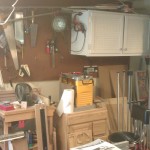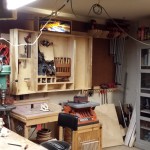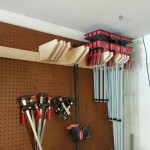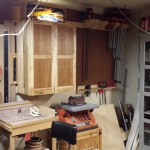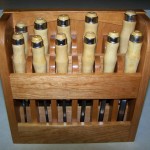 A week or so ago I had an acquaintance come up to me and ask me how I would go about building a knife block. He has a set of steak knives with no block and was having trouble finding one in stores. I do occasionally have people reach out to me and ask me advice on building something, and I am always willing to share. I gave him a couple ideas on how one could be made. He then offers me $20 to make him one. I politely declined.
A week or so ago I had an acquaintance come up to me and ask me how I would go about building a knife block. He has a set of steak knives with no block and was having trouble finding one in stores. I do occasionally have people reach out to me and ask me advice on building something, and I am always willing to share. I gave him a couple ideas on how one could be made. He then offers me $20 to make him one. I politely declined.
I haven’t yet made anything with the intent to be sold. The closest I have come to that is building gifts for others. That said, I have not figured out what the best formula is for pricing my work.
To make a point, I have no issues against Ikea or Walmart. They both fill a market need, and, admittedly, have shopped at both stores. However, what I, and other woodworkers for that matter, find frustrating is when people confuse mass produce products of varying quality to a custom piece. My goal in the wood shop isn’t to build something that will compete Ikea or Walmart. The products in those stores are mass produced in a way to produce them quickly and cheaply. For the casual on looker its hard to get past that idea, and are often surprised at how much a custom piece can cost. They don’t see the preparation of the stock, the machine setup, the test cuts, applying the finish, or even the time it takes to come with even some basic plans. Therefore, even a simple knife block could have 5-6 hours invested in it. So, for that amount of time, for a custom made piece, would $100 be fair? $80? $50? While it would be easy to say “it’s just a knife block” it is easy to forget it is custom made vs. store bought.
Being realistic, I doubt I would ever take on a commission that simple, simply because no one would be willing to pay what it would take to make one, vs. buying from the store. Unless of course its my wife asking for it! 🙂
Along the same lines, a more realistic commission would be a piece of furniture, say a night stand. This could take 20 or more hours to make, and for a skilled woodworker, it would not be unreasonable to ask $1000. Most likely this is a custom design that has gone through several revisions till it meets his customer’s satisfaction. Then their is material cost. Lets face it, good hardwood is not inexpensive. Then after the piece is made, providing the customer finish samples so that they can get the right look. It is easy to see why a simple furniture piece can get up to $1000. Now understand what his frustration would be if the customer asked the woodworker to do this for $100. I know I wouldn’t be happy.
Since I haven’t done any commission work myself, I don’t feel in a place to offer much in the way of pricing a commission. However, I can understand to a degree people’s misconception of how much a commissioned piece should cost. First off, they are flooded with DIY TV shows that demonstration projects being put together in under 30 minutes, so it seems much more simple to build a piece then it really is. Also if a person’s budget is tight they maybe look for a cheaper alternative then what they see in stores, and not understanding what is involved in making a piece, think that having a piece made is a viable option. The reality is what a piece costs in a store would barely cover the cost of material for a custom made piece.
Coming up with a reasonable price for a commissioned piece is always going to be a challenge. The best advice I can give anyone who is ready to branch out to this, is have a fair pricing formula, and be able to clearly show the customer what is going into the piece. Finally, don’t ever undercut yourself. Your time is worth more than you think, make sure you get something for it.

![WP_20130716_003[1]](http://madermadeit.com/wp-content/uploads/2013/08/WP_20130716_0031-150x150.jpg)
![WP_20130716_005[1]](http://madermadeit.com/wp-content/uploads/2013/08/WP_20130716_0051-150x150.jpg)
![WP_20130716_002[1]](http://madermadeit.com/wp-content/uploads/2013/08/WP_20130716_0021-150x150.jpg)
